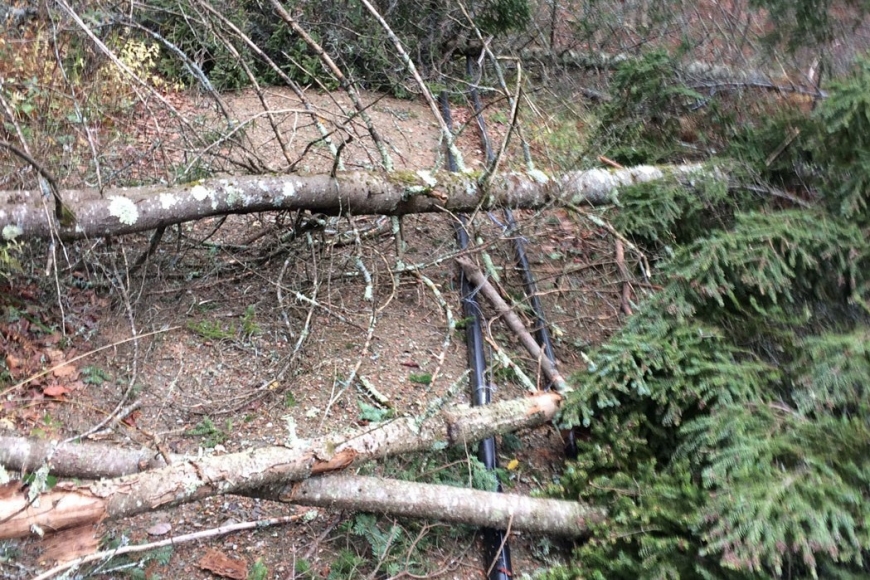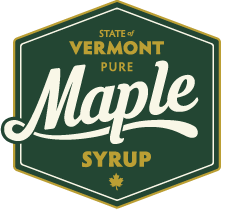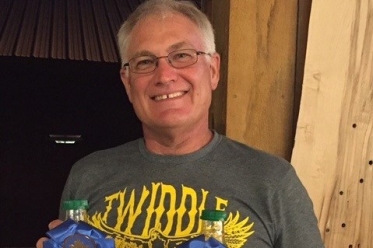Maple's Resiliency After Wind Storm

Mark Twain is reported to have said “if you don’t like the weather, just wait a few minutes.” While the variability of New England – and Vermont – weather can be a source of jokes, it can also have devastating effects. In the overnight hours between October 29 and 30, many areas of Vermont were raked by strong winds out of the southeast, a somewhat unusual direction for weather patterns. The following day saw many schools closed and over 70,000 homes in Vermont without electricity. While many headlines focused on the challenges of getting power back to those homes in the remote parts of Vermont, sugar makers were trying to assess what sort of damage they had in the woods.
When a sugarbush has numerous downed trees and limbs, not only is the health of the trees at directly at risk from the damage sustained, but so too is the infrastructure that is in place. Vermont’s sugar makers collectively have thousands of miles of tubing strung in the woods to efficiently transport sap from the trees to the sugarhouse where it can be boiled down to make maple syrup. These networks of tubing, made up of larger pipes, or mainline, and smaller lines, or lateral lines, which feed the mainline, crisscross the hillsides of a sugarbush. Downed trees are apt to crush parts of the tubing system, necessitating repairs to the system. Repairing the tubing requires one to cut and remove the downed tree, remove and replace the damaged section, and finally bring the whole tubing line back to the proper tension. It’s also possible, or even likely, that other infrastructure could have been damaged as many sugar makers have pumping stations, collection tanks, and vacuum-releasers in the woods as part of their sap collection process. Items like these are liable to damage in storms like we saw at the end of October.
Simply accessing the woods is made difficult in the conditions brought on by extreme wind events, as sugar makers may need to take significant amount of time to clear the access roads of downed trees, limbs, and other debris. Working among the hillsides and mountains of Vermont can be challenging enough in good conditions but can made even more so with a tangle of downed trees and broken limbs. It can be dangerous too, as quite often trees are hung up in other trees in the forest, creating potentially deadly snags or heavy limbs which were broken off and hanging in nearby trees. Those latter situations are known for their deadly qualities, being known as widowmakers in the forestry trades.
Damage to tubing, equipment, and roads is immediate but perhaps the most difficult damage to assess and repair is any damage to the maple trees. If a tree is heavily damaged, sugar makers will no longer tap that tree. While a single tree here or there will not meaningfully impact the yield of syrup a sugar maker can expect, if damage is widespread it could become a significant issue. Broken limbs or splintered trunks are wounds and, while they may not cause mortality in a tree, such damage can certainly compromise a tree’s overall health and affect sap yield in the spring. Much like humans with compromised health are at risk of exposure to other illnesses, trees can be become affected by illnesses or invasive insect pests when their health is compromised by open wounding.
Thankfully, the sugar maple is a hardy tree with some interesting defense capabilities. Maples will wall off and grow around damage sustained to wood tissues, a response trait that is evidenced by many old maple trees which have been damaged by past wind storms, lightning strikes, or similar phenomenon. This trait is central to the sustainability of tapping a tree for collecting sap as the tree will close off the wound and create conductive tissue around the tap hole.
While there was significant damage in some sugarbushes several weeks ago, Vermont sugar makers are busy repairing their equipment and working in the woods, so they will be ready to tap the trees this spring. It serves as a sharp reminder how dependent sugar making is on the weather. So, don’t worry, sugar makers will still be able to make the delicious syrup that is the official flavor of our state.





